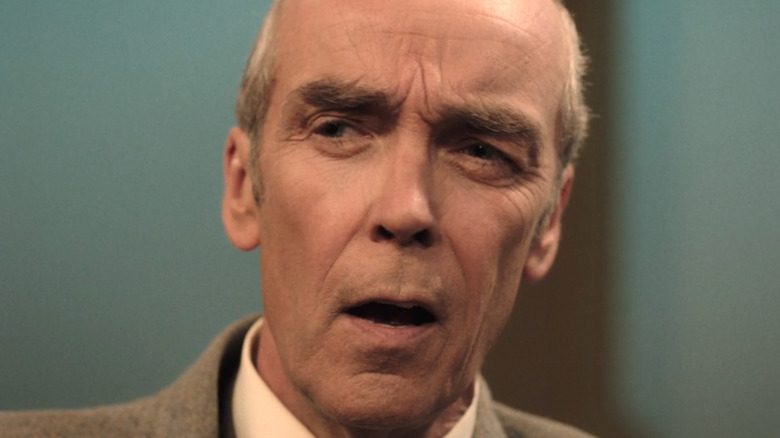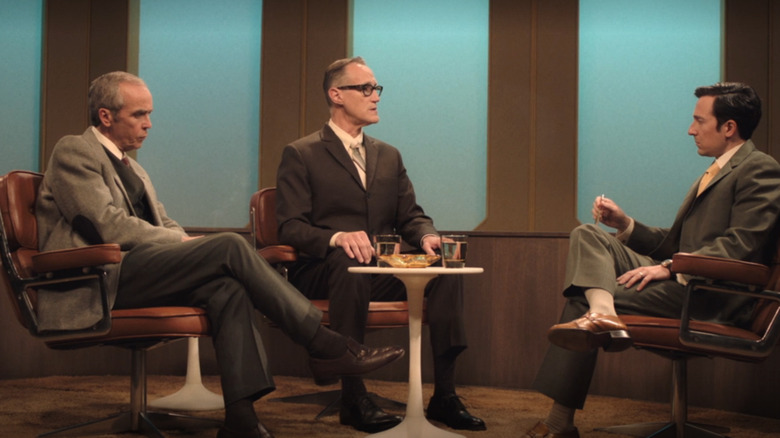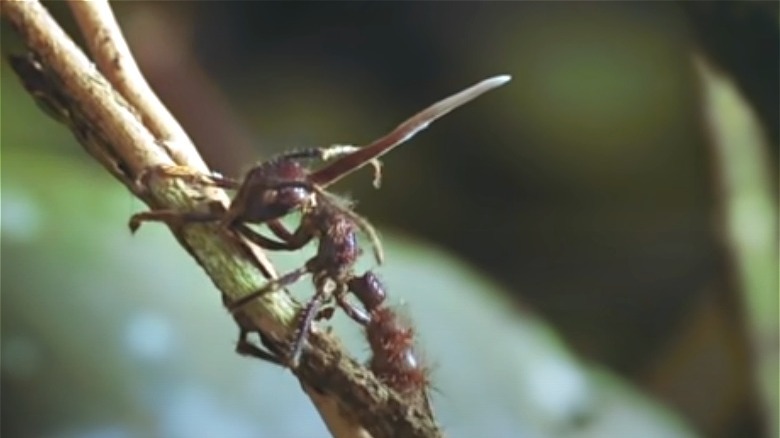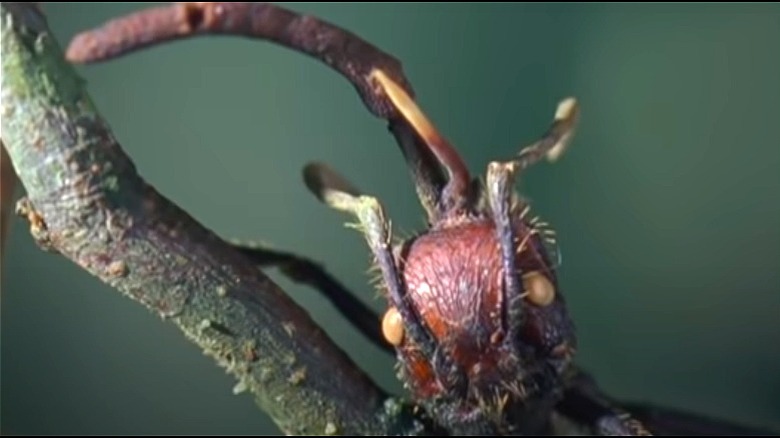The Last Of Us Episode 1 Originally Had A Very Different Opening Scene
Fungi are some of the most important living organisms on the planet. Often tasked with the recycling of nutrients and energy, the fungus provides an important function when it comes to life on this planet. Had it not been for fungi, many dead things wouldn't be broken down, and this world would be filled with untold amounts of accumulating detritus. However, not all fungi provide this important recycling function, and some take an entirely different route, often crossing into the parasitic realm of life.
"The Last of Us" is the latest offering from HBO, and it adapts the video game series of the same name. Both the show and the video game are predominately set in a ruined world where humanity has been utterly devastated by a rampant fungal infection. Instead of some kind of rash or sickness, this fungal infection completely transforms those that come in contact, and it transforms the afflicted (or the Infected as they're known on the show) into aggressive beings that seek only to spread the sickness.
Of course, this is only the first stage, and soon the Infected find themselves physically transforming, becoming increasingly terrifying and virulent. In other words, there's a reason why humanity huddles together in enclaves, for the world is exceptionally dangerous and foreboding even for those with the skills to survive in this new reality. Surprisingly, HBO's "The Last of Us" almost had a different cold open — one that would have really dived into the science.
The intro for The Last of Us starts with a 1960s style science discussion
HBO's "The Last of Us" starts off with what appears to be a retro science program set in the late 1960s, in which two epidemiologist researchers are having a discussion. The topic of cordyceps comes up, which is a parasitic fungus with an infamous proclivity and terrifying reality. Cordyceps is actually a real-life fungus, and according to Britannica, generally preys on insects through infection. This infection changes the behavior of the insects, with the bugs in question forced to dance to the fungus' tune. Although some species of insect have the means and the knowledge to quarantine the infected, many do not, and cordyceps can absolutely devastate arthropod communities.
Of course, the fact that cordyceps only affects insects is brought up in the cold open of "The Last of Us." One of the scientists, played by John Hannah from 1999's "The Mummy," mentions how the world is changing and notes that although cordyceps cannot currently survive in the human body's heat, they may eventually. He then implies that since the world is becoming hotter the cordyceps fungus and spores might eventually adapt to warmer climates which, by extension, would allow it to survive in the human body.
The doctor then offers a grim warning, and "The Last of Us" gets rolling. As mentioned earlier, this exceptionally well-received video game adaptation almost went with a different approach with this opening, though cordyceps was still the focus of the conversation. But how was this unrealized opening any different from what audiences got a chance to see?
The Last of Us was originally going to start with a documentary
Appearing on Troy Baker's companion podcast that goes over the most recent episode of "The Last of Us," series creators Craig Mazin and Neil Druckmann had a chance to discuss how they came to craft such a stirring first episode. When the subject of the first moments of the show came up, Mazin and Druckmann explained that several pitches were tossed out regarding the intro for "The Last of Us," and one of the first scenes considered was one that took its inspiration from a popular documentary series. Mazin explained, "[On] Planet Earth, you can watch this beautiful demonstration of how cordyceps works, how it takes over an ant. It's quite horrifying. It tells you everything you need to know. What we decided to do was make our own video like that."
Mazin continued and said that they had crafted this video, which was very similar to the one featured in "Blue Planet" over on YouTube, and although the information presented was pertinent and interesting, it wasn't necessarily compelling. Druckmann then quipped that this intro was boring, and it felt like watching something in a social studies class.
Mazin then elaborated that they decided to go in a different direction, the one that audiences got a chance to see, and both himself and Druckmann felt like this iteration was far more effective because it was dramatized and set the groundwork for the rest of the series, whereas the original documentary style intro was a bit stuffy and cumbersome.
The Last of Us showrunners believe the current intro is far more effective
On the podcast, Craig Mazin continued, "These like quote-unquote mundane moments with the Miller family and this [talk show intro] elevated all those scenes because now, because of that opening, there's a tension that's just like hanging in the air. So when they're having breakfast it's tense. When they're driving to school it's tense. When she's in that watch shop — everything became more tense and more captivating because of this opening." Neil Druckmann added onto the thought, sharing that he thought the current opening helped contextualize the rest of the show and felt like this added stress and audience worry helped dial viewers into the episode.
This proved to be immensely effective because, by the time HBO's "The Last of Us" really gets moving, viewers are already starting to suspect that events are going to start to get out of hand very quickly.
The results have been simply overwhelming when it comes to the response to "The Last of Us," which currently has a 99% critic score and 96% audience score over on Rotten Tomatoes for the first episode as of the time of this writing. Although the acting and story are doing much of the heavy lifting for the series, the debate-style intro for "The Last of Us" definitely helps to establish the tone and feel for the rest of the premiere episode and, by extension, the rest of the series.



